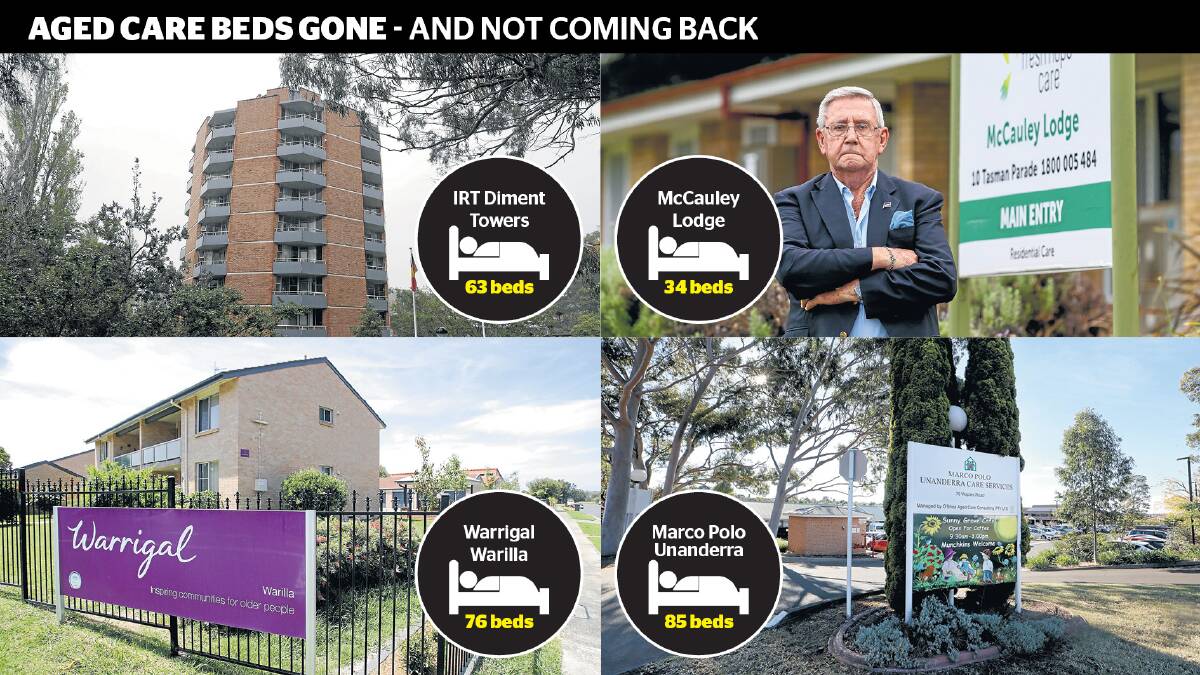
Illawarra aged care places are closing at an alarming rate, as the region's hospitals are unable to move elderly patients into aged care beds and more families shoulder the burden of supporting older relatives at home when they could be better cared for in aged care facilities.
Subscribe now for unlimited access.
or signup to continue reading
New figures from the federal health department state that the Illawarra is short of 600 residential aged care places, as of 30 June 2023.
At the same time, 89 patients are stuck in Illawarra Shoalhaven hospitals, waiting for a residential aged bed.
The Illawarra figures are some of the worst in the country, and place additional stress on the wider health system as elderly patients can't be moved out of hospitals, reducing the number of beds available for patients in need of acute care.
Over the past four years, numerous residential aged care facilities have closed, contributing to the collapse in the number of aged care beds.
The latest facility to close or be redeveloped is sections of IRT's Woonona facility, with the aged care provider deeming the 1970s era buildings in need of demolition. A final masterplan is yet to be developed, but IRT signalled that high-need beds were not the focus of the redevelopment.
"Rather than replacing Ribbonwood with another aged care building, we will be proposing to develop a community that enables people to live independently for longer and supports them through all stages of ageing," an IRT spokesperson said.
IRT Woonona is not alone, a number of facilities that provided high-need aged care have closed including Warrigal Warilla (76 beds), McCauley Lodge in Thirroul (34 beds), Marco Polo Unanderra (85 beds) and IRT Diment Towers (63 beds).
Many of these buildings were constructed in the 1970s and were in need of extensive renovations to be up to modern standards.
Jenni Hutchins, CEO of Warrigal Aged Care, said the types of aged care facilities that were closing were "loss leaders" and that serviced independent living units propped up the high needs facilities.
"The money it takes to run a home doesn't create a surplus," she said. "There's something about the funding model that categorically needs to change for providers to be able to build new homes."
In the October to December quarter of last year, 54 per cent of aged care providers operated at a loss, according to figures from the federal health department.
While this was partly driven by a hangover in increased costs from COVID, the more fundamental issue was a mismatch between the desires of older Australians and the funding required to deliver on that, Ms Hutchins said.
"At the moment, the funding model doesn't allow for us to build new beds, and if I do a scan across all the CEOs I know, not one organisation or CEO is planning on building a residential aged care home."
UOW's proposed Health and Wellbeing Precinct adjacent to the Innovation Campus in Fairy Meadow proposes a residential aged care facility with up to 144 beds, to be completed in 2025.
In addition to those elderly people in hospitals waiting for a bed in an aged care facility, Ms Hutchins said there was a "silent number" of elderly people living at home who would be better served in a residential aged care facility, but can't get in, and the situation was only going to grow.
"There is a tidal wave that we know is coming around aged care, particularly in the Illawarra in terms of the ageing population."
Our news app has had a makeover, making it faster and giving you access to even more great content. Download The Illawarra Mercury news app in the Apple Store and Google Play.


